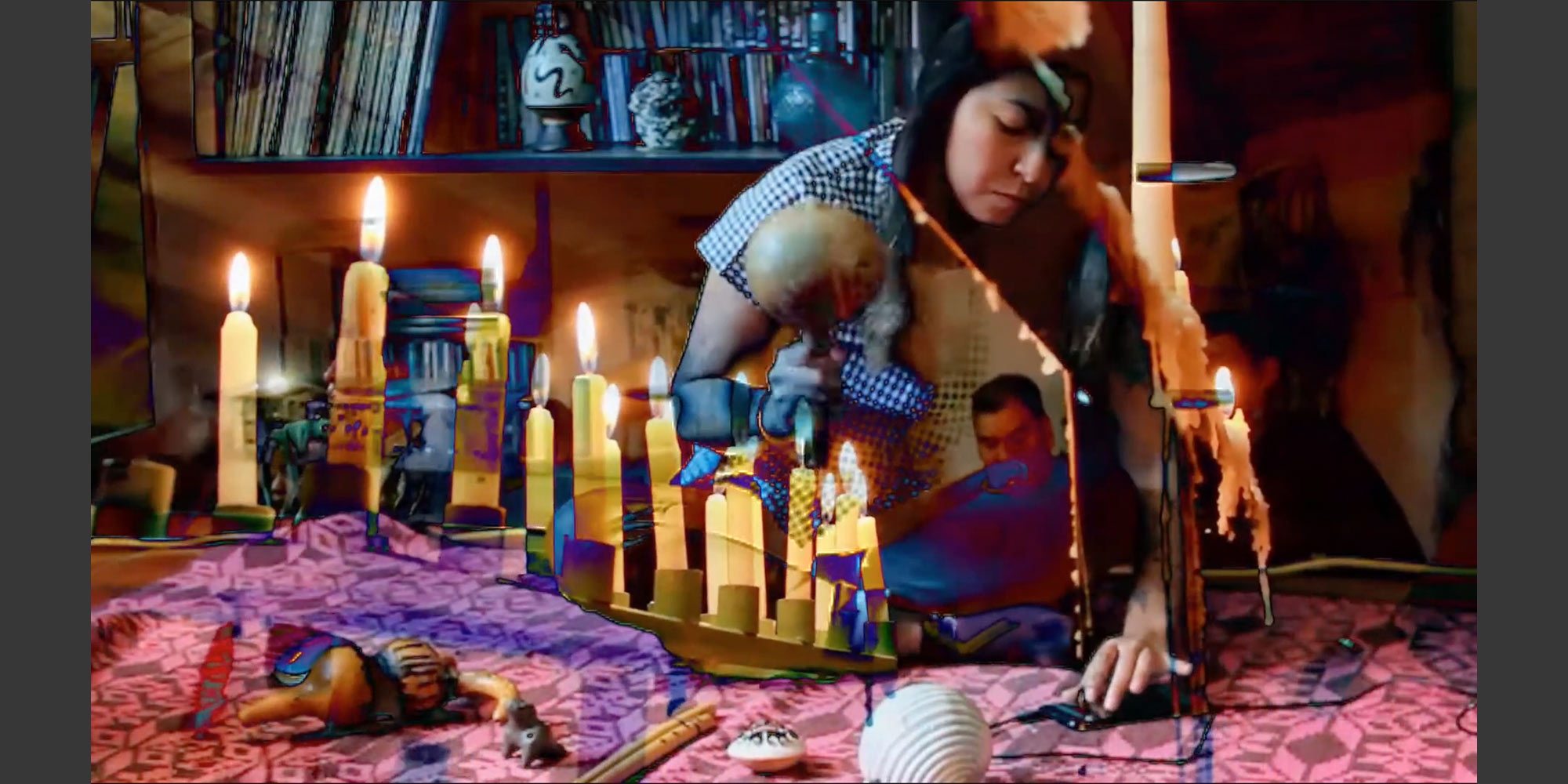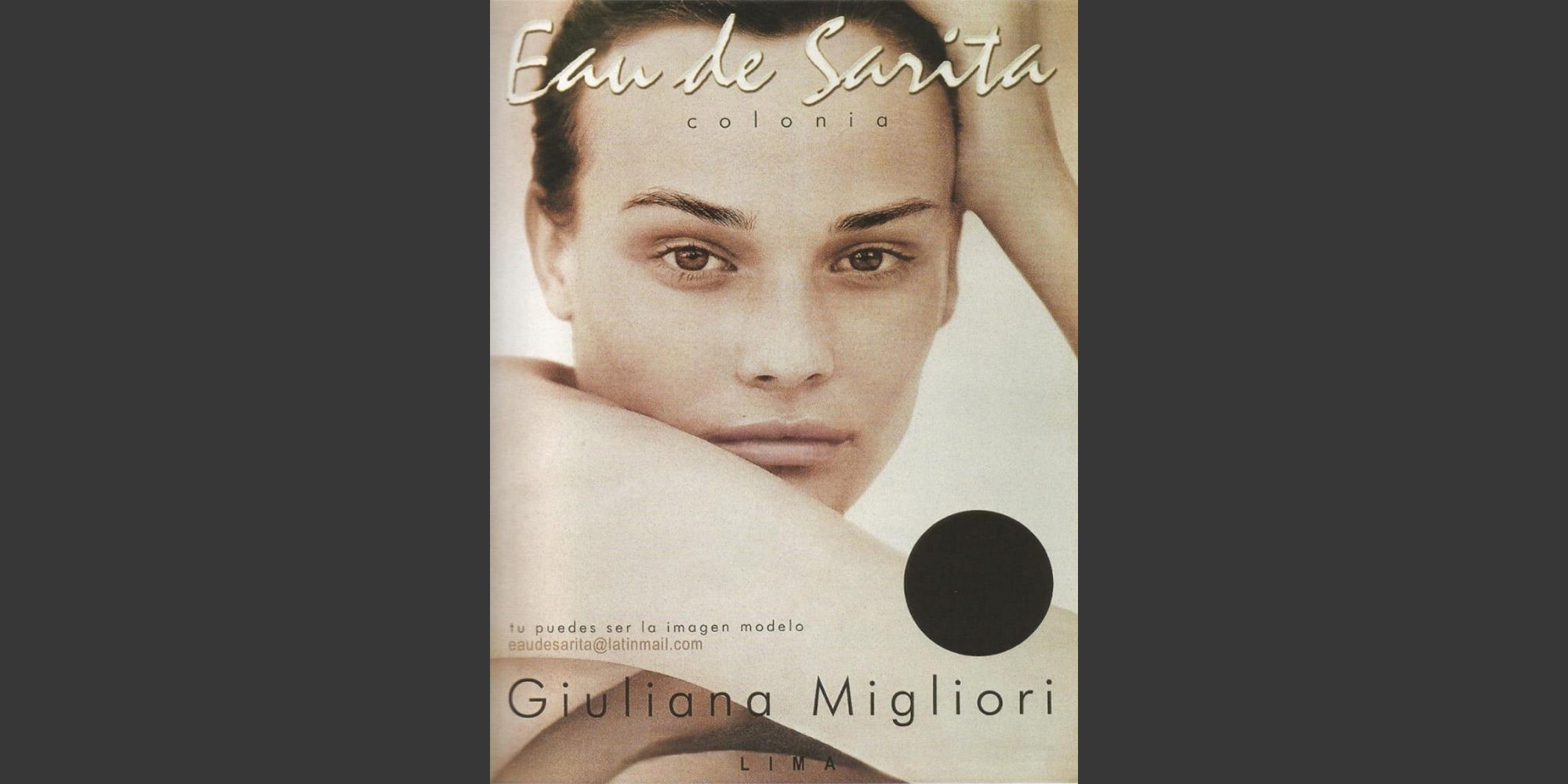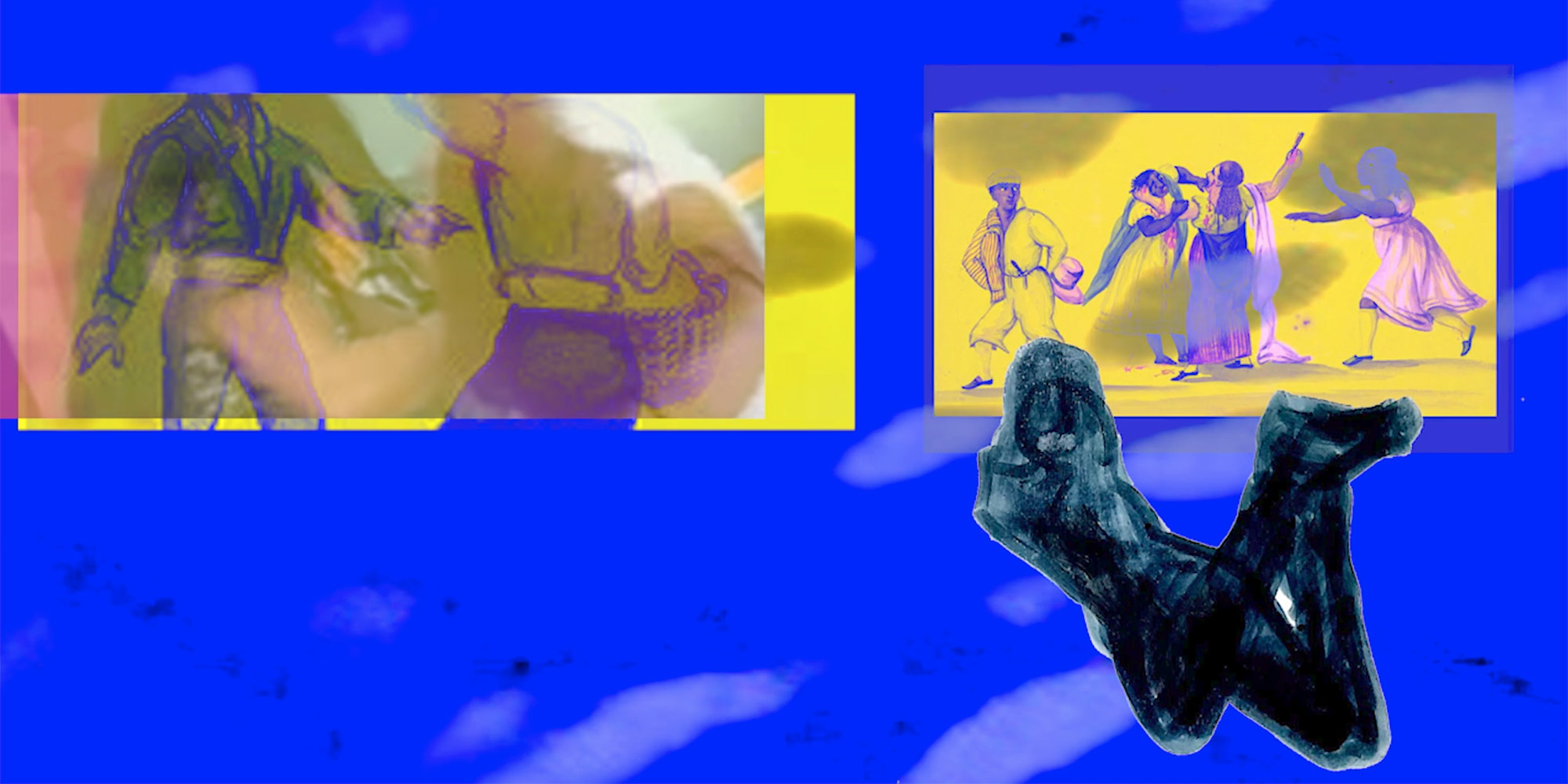Explorations and Exchange in Peruvian Audiovisual Media
As peruvian curator Jorge Villacorta once mentioned, the idea of the „hybrid“ refers to the product of a crossbreeding of different species that translates into interdisciplinary, and is often the core of creative explorations. Since the 1960s when some artists moved away from conventional forms, the field of experimental visual arts in Peru gained momentum and audiovisual projects became a means of integration, taking resources from various disciplines that connect agents from the visual arts, music, performance and dance, to create aesthetic experiences.
Hybrid Creations seeks to take this period as a starting point to present an interdisciplinary and cross-generational perspective, bringing together pioneering work from the 1970s to the early 2000s, with the production of young artists from different regions of the country, who have developed video pieces in 2020 and 2021. Between the different works there is a latent correspondence related to recurrent themes and forms around the relationship between image, movement, sound and the body, but at the same time, they share a reflective approach on the historical heritage and new media, which leads them to rethink traditional elements in their current local context.
First section:
-
- Mario Acha
Mito de Inkarri (1977)
8:29 min
Black and white animated short film based on the 16th century drawings by the chronicler Felipe Guamán Poma de Ayala. It reproduces scenes from the myth of Inkarri, in which it is narrated how Inkarri is decapitated by the Spaniards and his head is buried in Cusco, but this head is alive, and when the parts of Inkarri are put together, the new Inca will be formed. Text selection by poet José Watanabe, script and plate design (photographic collages),stop-motion with acetates by Mario Acho, music by Manongo Mujica.
- Mario Acha
-
- Gonzalo Pflucker
El perfil de lo invisible (1985)
9:55 min
Influenced by Oriental mysticism, this video animation piece is the result of a reflection on the concept of duality, as a circumstance that possesses opposing characters which have their origin in the same nucleus. The interaction between antagonists is represented by figures of birds, felines and other animals that relate and link up with animated characters, entering into a constant struggle in which there is no visible winner.
- Gonzalo Pflucker
Credits:
-
-
- TELECINE (Production)
- Gonzalo Pflucker (Direction, animation, script and drawings)
- Victoria Chicón (Sound edition)
- Javier Zapata (Editing and camera)
- Arturo Ruiz del Pozo (Music, synthesizer and clarín)
- Belisa Salazar (Voice)
- Juan Luis Pereira (Guitar)
- Raúl Pereira (Winds)
-
-
- Rafael Hastings
Cuerpo pintado (1992)
14:47
Rafael Hastings was invited to participate in the Cuerpos Pintados Experimental Workshop in Santiago de Chile, where painters from all over Latin America were invited to replace painting on dead canvas with the intervention of living bodies, as if they were canvases. In Hastings‘ case, he turned his intervention into a distinctive video-recorded performance. To this end, he worked with Cuban-North American dancer Bertica Prieto (Chilean) and managed to produce a composition of audiovisual scenes that features many of the recurring elements of his plastic work, which merges with his interest in the moving image, choreography and color.
- Rafael Hastings
- Giuliana Migliori
Eau de Sarita Colonia (2002)
The conceptual proposal of this multimedia project, which plays with the format of a fictitious TV commercial, revolves around the meaning of Sarita Colonia as an icon and representation of gender and race, an aesthetics of the marginal that is not included in the canon, and much less used as an advertising reference. This was one of the winning projects at the II National Biennial (Perú, 2000).
Second section:
-
- Irma Cabrera
Cruces (2020)
20:48
Sound improvisation with instruments from ancient Peru, digital synthesizer emulator and soundscape from the Las Cruces de Porcón Festival in Cajamarca, Peru. Every year, the faithful come to the call of the festival’s godfather in honour of Cristo Ramos, patron saint of Porcón.The whole community gathers and performs a series of rituals and roles for several days; praying, thanking and asking the saint for a year of abundance. Cruces is a sound improvisation inspired in Quechua songs and on the ritual meeting to expand the tradition, beginning with a free interpretation of the festivity.
- Irma Cabrera
-
- Krizia Zurita
La postura que no caduca (2020)
02:31
Based on a surveyof Pancho Fierro’s work, the artist draws attention to the similarity between the misunderstanding of her own characters and those in the tabloids; the implicit image of the eternal witness to the conflict and the movements of the body in confrontation.
Fierro’s watercolours and more than 200 drawings taken from sketches for other videos were used in the making of this work. These were randomly and synthetically augmented with digital animation tools and artificial intelligence.
- Krizia Zurita
-
- Fabrizzio Yabar
Precolombina (2021)
Video animation that presents characters reconstructed from the fusion of iconographic elements of various Peruvian pre-Hispanic cultures, which playfully reveals a graphic reflection on the continuous processes of constructing a Peruvian identity. The piece includes a musical composition by Teté Leguía.
- Fabrizzio Yabar
- Frank Soria
Shenán pikotai/ Sacando memoria (2021)
Led by the singing of icaros produced by Kené design, the video takes us on a journey through animated images with geometric patterns that condense essential aspects of the cosmovision of the Shipibo Konibo people, their deep relationship with nature and the visions experienced with master plants. In addition to their great aesthetic value, the designs express a body of knowledge and a memory that integrates art and science, connecting the material with the immaterial, linking traditional roots with contemporary expression. The song of the icaros is performed by Shipibo artist Miriam Soria Gonzales.
Filmmaker, visual artista, museographer, researcher and scriptwriter, he studied at the INSAS Brussels. In the 70s he became interested in the pre-Hispanic cultures of Latin America and developed a series of short films. In the 80s, he worked for UNESCO and developed documentaries on the Historic Centers of different countries. In the 90s, he made documentaries about unprotected children and street children for Unicef. He is one of the founders of the Plataforma Fotografía Peruana Contemporánea (Contemporary Peruvian Photography Platform).
Audiovisual producer, photographer and experimental musician. She has a degree in Communication Sciences and has specialised in Photography, Photographic Conservation and Preservation, Non-fiction Film and Computer Music. She is interested in visual anthropology, image archaeology and obsolete technologies.
One of the most important contemporary Peruvian artists whose multidisciplinary work encompasses painting, poetry, music, video, happenings, sculpture, installation, drawing, etc.
He studied painting at the Academy of Fine Arts in Brussels and at the Royal College of Art and participated since the 1970s in several international exhibitions linked to new media. Hastings had more than a hundred exhibitions all over the world and has received numerous distinctions, such as the Codex Prize for Latin American Painting, the Paris Biennale Prize, the German Critics‘ Prize, among others.
Visual artist and associate professor in the Department of Art and Design (PUCP), BA in Art with a major in Painting, MA in Visual Anthropology, and student of the PhD programme in Critical Theory of 17, Instituto de Estudios Críticos de México. She has held several exhibitions in the artistic and cultural field and has published academic articles on interdisciplinary topics. Her work “eau de Sarita”, was one of the winning projects of the II National Biennial (Perú, 2000).
Percussionist, composer and visual artist, studied in Vienna with Klaus Stein. He recorded the album “Paisajes Sonoros” (Sound Landscapes) with Douglas Tarnawiecki in 1984, focused on sound experimentation. That year, he also founded the “Manongo Mujica Quartet” which would later become “Perujazz“, the first band blending Peruvian rhythms with jazz. His most recent works include Huaca Sonora (2015), Manongo has musicalized numerous films and television programs. His constant search of sounds, from tribal to electronics, has even led him to compose music from silence, and that is why he is considered one of the most recognized avant-garde Peruvian artists.
Studied composition at the Universidad Nacional de Música del Perú and visual arts at Corriente Alterna. He has participated in the experimental music scene in Lima since the early 2000s and has collaborated with groups and musicians such as Tanuki Metal Yonin Plus, Gomas, Flor, Martín Escalante, Laura Robles, Gibrán Andrade, Brandon Seabrook, Sam Weinberg, Weasel Walter, Artaud, among others. Since 2016 he has been managing the series of improvisation and experimental music concerts „Minutos para el fin“.
Composer, accordion, piano and synthesizer soloist. He studied in Lima and continued his musical studies at the Royal College of Music. In 1978 he presented his work Composiciones Nativas (concrete music for native Peruvian instruments). He composed music for the feature films „Expropiación“ and „Gregorio“ and organised two important festivals „Marcahuasi 88, Encuentro por la Paz“ and „El concierto Nazca: encuentro por la paz 1991“. He has received the National Council of Science and Technology Award CONTYTEC for his contribution to National Culture.
Artist and teacher of the Shipibo community. The Soria family has participated in encounters on traditional medicine and indigenous cultures around the world. Frank is the heir and disseminator of this knowledge. His creations are rooted in the tradition of his culture and at the same time propose a personal and contemporary gaze linked to optical art. He has recently participated in exhibitions at the Centro Cultural Maguey, „Resistencias Culturales“ at the Museo Metropolitano de Lima, and with the Colectivo Carga Máxima.
Artist and teacher, holds a degree in visual arts by the Universidad Nacional Diego Quispe Tito (awarded Gold Medal, class 2017). He is an honorary member of the Michelangelo Buonarroti Order of Arts of the Accademia Internazionale Santarita in Turin (Italy) and is one of the founding members of the art collective „La Hora Tinta“. Has had solo exhibitions and has participated in group exhibitions, including the first Cusco Art Biennale. He is currently a teacher at the Colegio Internacional Andino Cusco.
Works mainly with drawing, video and installation to explore the diverse relationships signified by media power, human movements and surveillance. Her work include: Videocorrespondencias desde el confín(amiento) (2020), Modos de Holganza (2019), and El Juego I, II (2018), selected as a finalist in the Concurso Premio ICPNA de Arte Contemporáneo (2019). Her work has been exhibited at Proyecto AMIL (Lima, Peru), Festival Byte Footage (Buenos Aires, 2020), Festival Videotitlán (CDMX, 2020), among others.
Credits
This programme brings together the projects of the following Peruvian artists: Mario Acha (DE), Irma Cabrera (PE), Rafael Hastings(PE), Giuliana Migliori (PE), Manongo Mujica (PE), Teté Leguía (PE), Gonzalo Pflucker (PE), Arturo Ruiz del Pozo (PE), Frank Soria (PE), Fabrizzio Yabar (PE) and Krizia Zurita (PE).
Co-curated by Sairah Espinoza (PE) and Almendra Otta (PE)
Museo de Arte de Lima – MALI/ Alta Tecnología Andina – ATA








